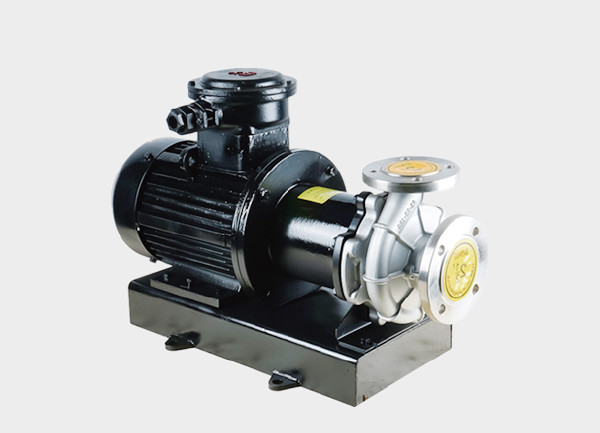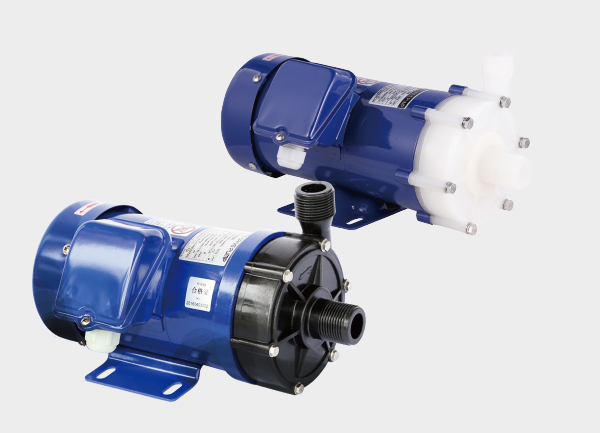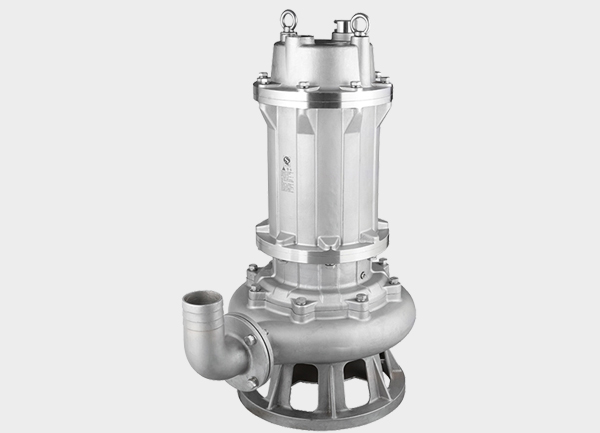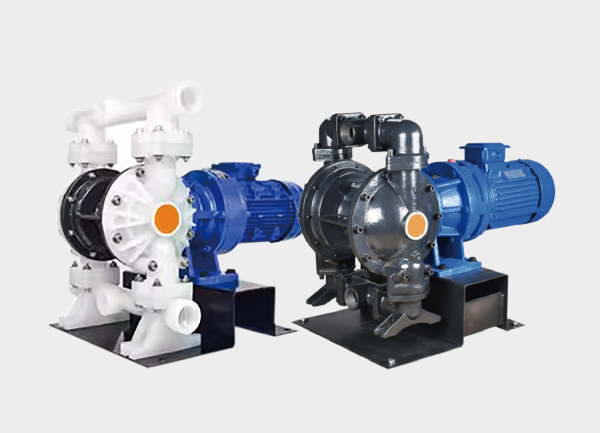Diaphragm pumps, a type of positive displacement reciprocating pump, operate by the reciprocating motion of an elastic diaphragm to change the pump chamber volume, enabling fluid intake and discharge. Their most notable feature is the complete isolation of the pumped medium from the driving mechanism, making them indispensable for handling corrosive, toxic, high-viscosity, or solid-laden fluids. Diaphragm pumps are widely used in chemical processing, environmental protection, food and beverage, and pharmaceutical industries.
1. Core Operating Principle
Diaphragm pumps rely on the coordinated action of diaphragm reciprocation and check valves. The key components include:
Elastic diaphragm: the core sealing element separating the medium from the drive.
Inlet and outlet check valves: control the flow direction of the fluid.
Drive mechanism: powers the diaphragm’s motion (electric motor, compressed air, or hydraulic system).
The operation is divided into two main strokes:
Suction Stroke
When the drive mechanism moves the diaphragm away from the pump chamber, the chamber volume increases, creating a vacuum. The outlet valve closes due to higher external pressure, while the inlet valve opens under fluid pressure, allowing the medium to be drawn into the chamber until the diaphragm reaches the end of its stroke.
Discharge Stroke
The diaphragm moves toward the chamber, reducing its volume and increasing the internal pressure. The inlet valve closes, and the outlet valve opens under the internal pressure, pushing the fluid out.
Through continuous reciprocation, the pump delivers a steady, controlled flow to the target location.
2. Major Types of Diaphragm Pumps
Diaphragm pumps can be classified by drive type and diaphragm material, each suited for specific applications.
2.1 By Drive Type
Air-operated (pneumatic) diaphragm pumps
Powered by compressed air
Features: simple design, no electrical components (explosion-proof), strong self-priming, can run dry
Ideal for flammable, explosive, or slurry-laden media in chemical plants
Electric diaphragm pumps
Powered by an electric motor (crankshaft or cam mechanism)
Features: stable flow, broad pressure range, easy automation
Used in water treatment, coating transfer, and general industrial processes
Hydraulic diaphragm pumps
Powered by hydraulic fluid
Features: extremely high pressure output (up to tens of MPa), powerful
Suitable for high-pressure operations like oilfield injection or high-pressure cleaning
2.2 By Diaphragm Material
The diaphragm material determines chemical resistance, temperature tolerance, and service life:
Nitrile Rubber (NBR): oil-resistant, good with general organic solvents; temperature range -40℃ to 120℃; suitable for petroleum, lubricants, non-corrosive water.
Fluoroelastomer (FKM/Viton): resistant to strong acids, alkalis, and solvents; temperature range -20℃ to 200℃; ideal for sulfuric acid, hydrochloric acid, methanol, acetone.
Polytetrafluoroethylene (PTFE): highly chemically resistant; temperature range -200℃ to 260℃; perfect for strong corrosives, and food or pharmaceutical applications.
Chloroprene Rubber (CR): weather, ozone, and mild acid/alkali resistant; temperature range -30℃ to 100℃; suited for outdoor use, weakly corrosive fluids, detergents.
3. Key Advantages and Limitations
3.1 Advantages
Leak-free design: isolates fluid from the drive mechanism; essential for toxic, hazardous, or valuable fluids.
Strong self-priming: can start without pre-filling; suction height 3–8 meters.
Handles complex fluids: can pump solids, high-viscosity, or crystallizing fluids without clogging.
Explosion-proof: air-operated types contain no electric components, safe in flammable environments.
Dry-run protection: certain models can operate dry without damage.
3.2 Limitations
Pulsating flow: inherent in reciprocating action; can be reduced with pulsation dampeners.
Pressure and flow limits: max pressure generally ≤1.6 MPa (excluding hydraulic pumps), max flow ≤100 m³/h; not ideal for large-volume, ultra-high-pressure tasks.
Maintenance costs: diaphragms are wear-prone (lifespan 3–12 months); replacement costs are higher than conventional centrifugal pumps.
4. Typical Applications
Diaphragm pumps excel in handling challenging fluids across multiple industries:
Chemical industry: acids, alkalis, organic solvents; slurry with catalysts; avoids clogging.
Environmental protection: sewage with sludge or suspended solids; dosing chemicals (PAC, PAM); spraying towers with absorbents.
Food & pharmaceuticals: fruit juices, syrups, sauces (PTFE diaphragm for food-grade compliance); transferring vaccines, blood products (leak-proof, GMP-compliant).
Mining & metallurgy: slurry, tailings, or materials with high solids content; transferring cooling or combustion agents.
Coatings & printing: paints, inks (high-viscosity, pigment-laden); stable ink delivery in printing systems.
5. Key Selection Criteria
Selecting the right diaphragm pump ensures long-term efficiency and reliability:
Fluid characteristics:
Corrosiveness → diaphragm material
Solid content → larger valves to avoid clogging
Viscosity → low-speed electric or high-pressure pneumatic pumps
Operating conditions:
Required flow rate and pump pressure
Fluid temperature within diaphragm tolerance
Safety margins for elevation and resistance
Installation & environment:
Explosion-prone → pneumatic pump
Laboratory → compact electric pump
Outdoor → rainproof design
Compliance:
Food/pharma → FDA/GMP standards, PTFE diaphragms, stainless steel body
Environmental → corrosion-resistant body to prevent secondary contamination
6. Routine Maintenance
Focus on extending diaphragm life and ensuring valve function:
Inspect diaphragms: weekly visual checks; 3–6 months disassembly for inspection depending on fluid aggressiveness.
Clean inlet/outlet valves: monthly cleaning; remove debris to maintain sealing and flow.
Maintain drive mechanism: electric – check lubricants, tighten connections; pneumatic – drain moisture daily, clean air valves weekly.
Verify fluid compatibility: recheck diaphragm and body material compatibility when changing fluids.
Conclusion
Diaphragm pumps are a vital solution for leak-free, corrosion-resistant, and high-reliability fluid transfer. Proper selection based on fluid properties and operating conditions, combined with routine maintenance of diaphragms and check valves, ensures optimal performance and cost-efficient operation across chemical, environmental, food, and pharmaceutical industries.








